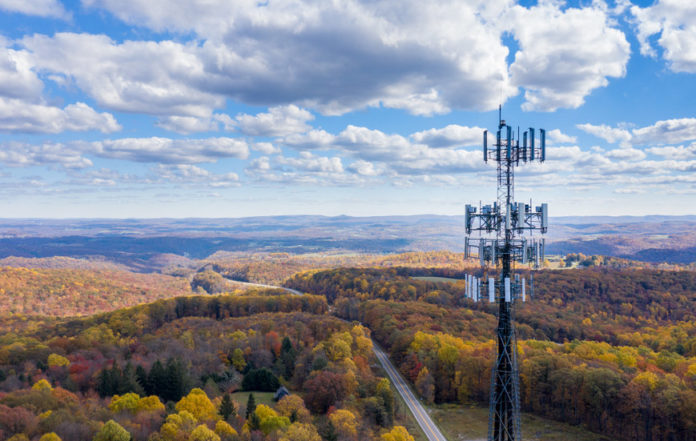AT&T, T-Mobile US and Verizon have taken ‘very different approaches’ on rural 5G expansion, Ookla finds
Over the past five years since launching 5G, the three national carriers have all expanded their rural 5G footprints. Each has taken a different strategy, however, driven primarily by their spectrum position—and in particular, their midband holdings, according to new analysis from Ookla.
Ookla looked at how the amount of time that 5G users spent on 5G networks has increased between 2019 to 2024. (That metric, the company noted, is impacted both by whether 5G coverage is available, as well as carriers’ network policies, which might prioritize LTE usage for some tasks.)
The benchmarking and analysis company found that T-Mobile US had the most 5G users—across both rural and urban markets—spending most of their time on 5G networks, followed by AT&T and then Verizon.

In breaking down the relative positions of the three national carriers, Ookla pointed to the following as boosting each one’s rural 5G coverage:
–T-Mobile US got a jump on low- and midband 5G coverage by starting its rural 5G deployments with its 600 MHz holdings—then, once it closed on its acquisition of Sprint, was able to quickly leverage a large amount of 2.5 GHz for 5G. The Sprint acquisition also included commitments from the carrier on rural coverage.
T-Mobile US’ rural 5G coverage is likely to expand even further, Ookla noted, if its pending acquisition of US Cellular’s spectrum holdings, customers and retail stores is approved.
–AT&T has touted the fact that it was able to piggyback major network upgrades off of work done to deploy the FirstNet network across the country, including in rural areas, as part of a springboard to 5G. “Besides its reliance on FirstNet, AT&T also has deployed 5G across its low-band spectrum and is building out its mid-band 5G network,” Ookla added.
–Verizon is significantly behind the other two carriers in its rural 5G availability, according to Ookla’s assessment. While Ookla’s numbers show more than 80% 5G availability for rural 5G users on T-Mobile US’ network, and AT&T’s top five states with rural 5G availability ranging from about 72-80% availability for users, Verizon rural 5G users access 5G networks less than 50% of the time.
Verizon first deployed 5G via Dynamic Spectrum Sharing, which split available network resources between LTE and 5G (AT&T took this route early on as well). Verizon also pushed into rural markets through acquisitions in which it bought several of its small roaming partners over the past few years. But those small carriers were not operating 5G networks, but LTE networks—so the network assets didn’t immediately contribute to rural 5G expansion for the carrier. Verizon also spent tens of billions of dollars on C-Band spectrum, but it just began talking about expanding C-Band coverage into rural and suburban markets last year—and “most of Verizon’s rural 5G coverage hinges on its C-band deployment,” Ookla said.
Verizon also has a stake in T-Mo’s acquisition of US Cellular that would impact its rural deployments. Assuming the acquisition closes later this year as expected, Verizon will be able to buy about a billion dollars of UScellular’s spectrum holdings in 850 MHz, AWS and PCS. “Although it’s unclear where those licenses are located, it’s likely that Verizon will use this spectrum to supplement its suburban and rural 5G coverage,” Ookla said.
Ookla breaks down top 5 states for rural 5G availability for each carrier
Ookla also assessed which states have the most rural 5G activity for each carrier, noting that the only two states which appear in all three carriers’ top 10 for 5G availability are Nevada and Illinois, meaning that those two states “have been a 5G focus for all three operators.”
According to Ookla, each carrier’s leading states rural 5G availability are as follows:
-T-Mobile US’ top five states with the best rural 5G availability are Florida, Connecticut, Illinois, Delaware and Georgia.
-AT&T’s best rural 5G availability was in the states of Texas, Florida, Alabama, Louisiana and California.
-Verizon rural 5G users saw the greatest availability in the states of Ohio, Arkansas, Texas, New Jersey and Delaware.
Read more details from Ookla here.

